Margaret Taylor-Burroughs
Art is part of our culture. Increasing cultural development, emphasizing creativity, and making us think or wonder about our existence are some of the many fruits of artistic expression. One legendary artist was Margaret Taylor-Burroughs. She was a visual artist, writer, poet, educator, and an arts organizer. She lived on this Earth for almost one century, and she contributed heavily to the expansion of art culture in America and throughout the world. I remember being in high school painting images, drawing pictures, sculpturing structures, and creating sketches on a regular basis. I love that activity because it enriched my mind and my soul simultaneously. She co-founded the Ebony Museum of Chicago, now the DuSable Museum of African American History. The same DuSable is named after Jean Baptiste Point du Sable, who was the first black person of African descent being a resident of Chicago. Margaret Taylor-Burroughs loved to work in Chicago to promote the cultural growth of black people. Chicago is one large epicenter of black cultural excellence. Ebony was created in Chicago, Richard Wright including Gwendolyn Brooks were from Chicago (being part of the Chicago Black Renaissance), Curtis Mayfield is from Chicago, and Ida B. Wells made an anti-lynching (and anti-racism) homebase in Chicago too. Representing many of the crown jewels of the Midwest, the city of Chicago certainly has contributed a great deal to world culture indeed. Burroughs worked so hard in her life. She also was credited in the founding of Chicago's Lake Meadows Art Fair in the early 1950s. Therefore, we have the honor unsung artists who changed history for the positive like the late, great Margaret Taylor-Burroughs.

Her Early Life
Margaret Taylor-Burroughs was born in St. Rome, Louisiana, where her father worked as a farmer and laborer at a railroad warehouse. She was raised there as a Catholic. Later, the family moved to Chicago in 1928 when she was 5 years old. At Chicago, she attended Englewood High School along with Gwendolyn Brooks (who was an iconic poet), who in 1985-1986 served as a consultant in poetry to the Library of Congress (now United States Poet Laureate). As classmates, both Taylor-Burroughs and Brooks joined the NAACP Youth Council. Burroughs earned her teacher's certificates from Chicago Theaters College in 1937. She helped found the South Side Community Arts Center in 1939 to serve as a social center, gallery, and studio to showcase African American artists. In 1946, Taylor-Burroughs earned a Bachelor of Arts degree in art education from the School of Art Institute of Chicago where she also earned her Master of Arts degree in art education by 1948. Dr. Margaret Taylor Burroughs exhibited her art at the American Negro Exposition (in Chicago by 1940), as well as at Atlanta University (1943-1945), and the San Francisco Civic Museum (in 1949). Burrough created many of her own works of art as well. In one of her linocuts, called Birthday Party, both black and white children are seen celebrating. They are around the table together waiting for a birthday cake. An article published by The Art Institute of Chicago described Burroughs' Birthday Party and said: "Through her career, as both a visual artist and a writer, she has often chosen themes concerning family, community, and history. 'Art is communication,' she has said. 'I wish my art to speak not only for my people - but for all humanity.' This aim is achieved in Birthday Party, in which both black and white children dance, while mothers cut cake in a quintessential image of neighbors and family enjoying a special day together." The painting puts in visual form Burroughs' philosophy that "the color of skin is a minor difference among men which has been stretched beyond its importance."
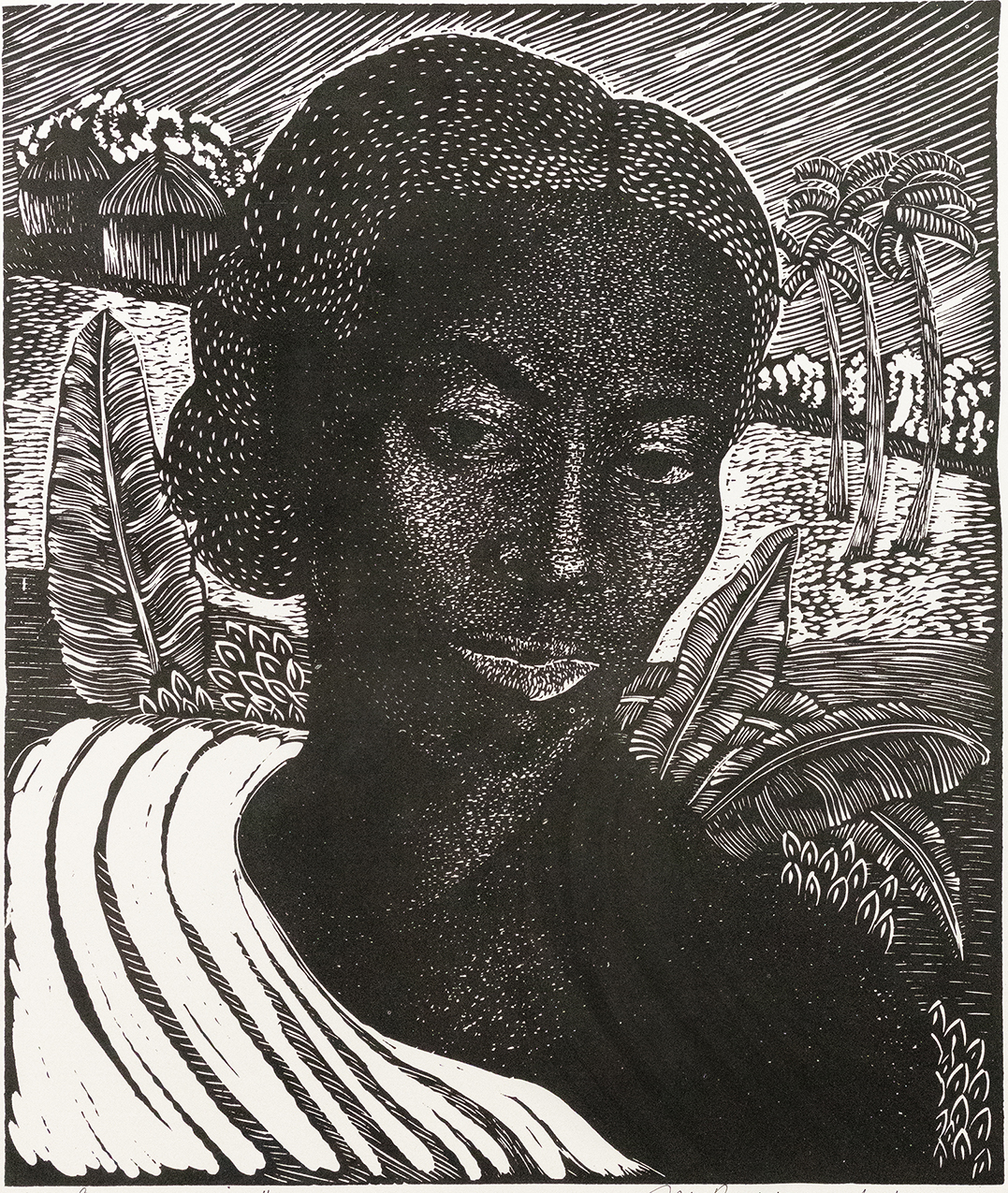
A Great Artist at Work
Burroughs once again depicts faces that are half black and half white in My People. Even though the title is similar to the previously referenced piece, the woodcut has some differences. In this scene, there are four different faces – each of which is half white and half black. The head on the far left is tilted to the side and close to the head next to it. It seems as both heads are coming out of the same body – taking the idea of split personalities to the extreme. The women are all very close together, suggesting that they relate to each other. In The Faces of My People, there were others pictured with different skin tones, but in My People all of the people have the same half-black and half-white split. Therefore, My People focus on a common conflict that all the women in the picture face. She made more works like Still Life in 1943 being done by oil on compressed particle board. She created the linocut work of Black Venus in 1957, On the Beach in 1957 via linocut, and Woman with ink on paper in 2006. Taylor-Burroughs taught at DuSable High School on Chicago's south side from 1946 to 1969, and from 1969 to 1979 was a professor of humanities at Kennedy-King College, a community college in Chicago. She also taught African American art and culture at Elmhurst College in 1968. She was named Chicago park district commissioner by Harold Washington in 1985, a position she held until 2010. Margaret Burroughs is the recipient of an honorary doctorate, as well as the President's Humanitarian Award (1975).

Later Years
Margaret Taylor-Burroughs' later years were filled with power and inspiration. Margaret and her husband Charles co-founded what is now the DuSable Museum of African American History in Chicago in 1961. The institution was originally known as the Ebony Museum of Negro History and Art and made its debut in the living room of their house at 3806 S. Michigan Avenue in the Bronzeville neighborhood on Chicago's south side, and Taylor-Burroughs served as its first Executive Director. She was proud of the institution's grass-roots beginnings: "We're the only one that grew out of the Indigenous Black community. We weren't started by anybody downtown; we were started by ordinary folks." Burroughs served as executive director until she retired in 1985 and was then named director emeritus, remaining active in the museum's operations and fundraising efforts. The museum moved to its current location at 740 E. 56th Place in Washington Park in 1973, and today is the oldest museum of Black culture in the United States. Both the current museum building, and the Burroughs' S. Michigan Avenue home are now listed on the National Register of Historic Places, and the house is a designated Chicago landmark. Burroughs was inspired by Harriet Tubman, Gerard L. Lew, Sojourner Truth, Frederick Douglass, and W.E.B. Du Bois. In Eugene Feldman's The Birth and Building of the DuSable Museum, Feldman writes about the influence Du Bois had on Burroughs' life. He believes that Burroughs greatly admired Du Bois and writes that she campaigned to bring him to Chicago to lecture to audiences. Feldman wrote: "If we read about 'cannabalistic and primitive Africa,'… it is a deliberate effort to put down a whole people and Dr. Du Bois fought this… Dr. Burroughs saw Dr. Du Bois and what he stood for and how he suffered himself to attain exposure of his views. She identified entirely with this important effort." Therefore, Burroughs clearly believed in Dr. Du Bois and the power of his message. The DuSable Black History Museum and Education Center has inspired future artists for generations.

Inspiring Modern Day Artists
It is always important to celebrate modern-day black artists. Mickalene Thomas is a professional painter, photographer, visual artist, director, and television producer. Art relates not only to beauty and creativity. Art is a profound extension of our human souls. Thomas has shown many paintings focusing on race, gender, and other issues. She can use rhinestones, acrylics, and enamel to showcase complex portraits and landscapes. She loves to show the diversity of black women to be celebrated. We know about Kehinde Wiley, who revolutionized the essence of portraiture. She has shown African American images in poses and various settings. Wiley made a portrait of former President Barack Obama that is very personal. She wants diversity in the arts, and she has been a modern-day legend in the artistic world. Norman Lewis is a very talented abstract painter and is part of the abstract expressionist movement. Betye Saar is a black woman artist who wanted to reclaim imagery in promoting the liberation of black people. She focuses on spirituality, racism, feminism, and other topics in her works.
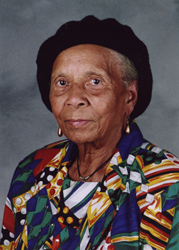
Her Passing and Legacy
Margaret Taylor Burroughs passed away in 2010. She loved to create art. Also, she had a prominent role in preserving and promoting African American art, culture, and history to black people and all people. It is always important to mention clearly that African Americans made tons of accomplishments in America plus the world in art, literature, STEM, and other spheres of cultural influence. She was a historic black woman who formed the DuSable Museum of African American History and the South Side Community Art Center. They are located in Chicago, Illinois. Many people forget that massive black cultural power of Chicago filled with scholars, writers, athletes, musicians, lawyers, activists, and spiritual leaders. Burroughs’s love of education was in her soul. Her family was part of the Great Migration traveling from Louisiana to Chicago. The Great Migration was one of the most important parts of black American history when many African Americans went from the South to the North, Midwest, and West Coast to escape the Jim Crow apartheid in seeking economic opportunity, justice, and a better way of life in general. She earned a Bachelor’s degree in 1946 and a Master’s degree in Art Education from the Art Institute of Chicago. She was a contemporary of African American legends like poets Langston Hughes and Gwendolyn Brooks, sculptor Augusta Savage, and painter Eldzier Corter. These people talked to each other in Burroughs’s home before. She promoted the Civil Rights Movement and loved her husband poet Charles Burroughs. As a writer and artists, her works have stood the test of time using sculpture and painting. She mentored President Barack Obama. Margaret Taylor Burrough shined her light extremely bright being a role model for all artists and freedom lovers worldwide.

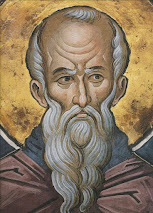
Christian History (312 A.D.-606 A.D.)
From 312 A.D. to 606 A.D, Christianity became larger and more institutionalized. Doctrines were debated and the Council of Nicea has been formalized and embraced by most professing Christians in 2025. Christianity during this era of Pergamos saw the merging of church and state with the reign of the Roman Emperor Constantine. This contradicts the words from the Lord Jesus Christ who said clearly that my Kingdom is not of this world and Render under God related to God and render unto Ceasar things pertaining to Ceasar. That means that believers should honor the laws of the land but not compromise their religious views at the same time. Also, Jesus Christ set up a clear boundary separating church and state as the state has no right to use force to make religious edicts involuntarily against people as people should be given the voluntary choice to believe in the Gospel or not. Historically, the union of church and the state caused many problems. This era saw the heretic Arius and his blasphemous Arianism doctrine being refuted as Christianity teaches that the Lord Jesus Christ is God incarnate. This doctrine represented the Nicean Council. By this time, the Western Roman Empire ended in Rome by 476 B.C., and the Eastern part of the Roman Empire became the Byzantine Empire. The Goths and other Germanic tribes invaded Europe. As more bishops sought Rome to handle disputes, the bishop of Rome evolved into the Papal system claiming supremacy over all Christians which is wrong as the only head of the Church is Jesus Christ. Monastic communities grew. Christianity spread from the United Kingdom to India, and to Africa. Literature and art grew rapidly on multiple continents. Western and Eastern Christians were increasingly divided on power and authority. The end of this period saw Emperor Justinian promoting his views on religion and forming Corpus Juris Civilis. Justinian I was wrong to persecute people. Pope Gregory I was one of the early popes who believed in the myth that the Bishop of Rome was the head bishop of all of Christianity when the Bible is clear that a bishop can be married. 606 A.D. saw the end of one era of Christianity nearing the start of the rise of Islam and the growth of the Middle Ages of Europe.
The 1700 Year Anniversary of the Council of Nicaea
The First Council of Nicaea met in the Bithynian city of Nicaea (in Iznik, Turkey today) from May to the end of July of 325 A.D. This council of Christian bishops was an ecumenical council that wanted to deal with the issue of the Trinity. Before 325 A.D, the concept of the Trinity was already embraced by the Church long before Constantine was the Roman Emperor. Constantine in 312 A.D. claimed to see a vision from God a shape similar to across in front of a sun. Many believe that after this, he converted to Christianity. He claims that he saw the words in this sign conquer. According to Eusebius, Constantine dreamed a voice said that his soldiers marked upon their shields the X with the line drawn through it and curled around the top. Then, Constantine won a battle. Yet, this image of the sun god is related to paganism. Constantine made Christianity adopted by Rome. He repealed the persecution edicts of Diocletian. Constantine unified church and state in Rome. This was wrong as the Church shouldn't be merged with a pagan system. Many Jehovah's Witnesses and other anti-Trinitarians believe in the lie that the Trinity was formed by the Nicene Council in 325 A.D. The issue was the heresies like Arianism promoted by Arius and other people who refused to believe in the Deity of Jesus Christ. The Council debated on the issue of the divine nature of God the Son and his relationship with God the Father. It also dealt with the observance date of Easter and early canon law. The first part of the Nicene Creed was embraced by the council. The council was started by the Christian clergy of Alexandria, Egypt. Archbishop Alexander of Alexandria and Athanasius believed in the Trinity and the presbyter Arius rejected the Trinity. Alexander taught that Jesus as God the Son was eternally generated from the Father, while Arius and his followers asserted that the Father alone was eternal and that the Son was created or begotten by the Father and thus had a defined point of origin and was subordinate to the Father.
Arius was a person who lived in Alexandria, Egypt. Arius accused Alexander of following the teachings of Sabellius, who taught that the Father, Son, and Holy Spirit were one person, rather than the view held throughout the east that they were distinct. Arius believed in the heresy that the Son of God never existed eternally, being a created being. He believed that since Christ was begotten, he had an origin, but the New Testament teaches that Jesus Christ was the only begotten Son of God, meaning that Jesus Christ was preexistent before Creation. The Son of God is the eternal God in human flesh. Arius' friend was Eusiebus. Alexander taught that Jesus Christ was the same substance (or Greek word homoosia) as the Father being God. Bishop Alexander's young deacon was Athanasius. Alexander called a local council of bishops from Egypt and Libya, which sided with Alexander's view. Arius refused to subscribe to the council's decision, and he and several followers were excommunicated and exiled from Alexandria by Alexander. Arius then traveled to churches around the Roman Eastern region of the Empire and wrote to bishops to gain support of his view. Among Arius' supporters were Eusebius of Nicomedia and Eusebius of Caesarea, and they advocated for his view and his restoration to the church in Alexandria. Alexander also circulated letters defending his own position. Parallel to the theological controversy between Alexander and Arius was the Melitian schism in the Alexandrian church. Melitius, bishop of Lycopolis, had acted in the stead of the imprisoned bishop Peter I of Alexandria during the Diocletianic Persecution, but after Peter's death in 311 refused to give up his right to ordain clergy or recognize the authority of Peter's successors Achillas or Alexander.
Alexander called a local council of bishops from Egypt and Libya, which sided with Alexander's view. Arius refused to subscribe to the council's decision, and he and several followers were excommunicated and exiled from Alexandria by Alexander. Arius then traveled to churches around the Roman east and wrote to bishops to gain support of his view. Among Arius' supporters were Eusebius of Nicomedia and Eusebius of Caesarea, and they advocated for his view and his restoration to the church in Alexandria. Alexander also circulated letters defending his own position.
The Western Roman emperor Constantine defeated the eastern emperor Licinius and was the sole ruler of the Roman Empire in 324 A.D. Constantine was controversial, and people debate whether he was a closet sun worshiper or not. Constantine claimed to embrace Christianity, but he followed the union of church and state. Constantine's letter was carried to Alexandria by Bishop Hosius of Corduba as his representative. Hosius apparently then presided over a synod at Alexandria concerning the date of Easter, before calling a council of Eastern bishops in Antioch. This council endorsed Alexander's position and issuing a statement of faith that held that the Son was "begotten not from non-existence, but from the Father, not as made, but as genuine product" and contained anathemas against Arius. Eusebius of Caesaria was also temporarily excommunicated because of his contention that the Father and the Son were of two different natures.
The expenses of the council, including the travel of the bishops, were paid by the imperial treasury. Contemporary reports of attendance range from 250 to 300, with the figure of 318 given by Athanasius of Antioch becoming traditionally accepted. 318 is also the number of members of Abraham's household given in the Book of Genesis. Lists of signatories to the final decisions of the council contain 200–220 names. With presbyters and deacons attending each bishop, the total attendance may have been between 1200 and 1900. Most of the bishops were eastern, with about twenty from Egypt and Libya, another fifty from Palestine and Syria, and more than one hundred from Asia Minor. One bishop each from Persia and Scythia were present. The few western attendees were Hosius, Caecilianus of Carthage, Nicasius of Die, Marcus of Calabria, Domnus of Pannonia, and Victor and Vicentius, two presbyters representing Bishop Sylvester of Rome. Of the eastern bishops, the principal supporters of Arius were Eusebius of Nicomedia, Eusebius of Caesarea, Menophantus of Ephesus, Patrophilus of Scythopolis, Narcissus of Neronias, Theonas of Marmarike, Secundus of Ptolemais, and Theognis of Nicaea. The principal anti-Arians included Alexander of Alexandria, Eustathius of Antioch, Marcellus of Ancyra and Macarius of Jerusalem.
The council was held in Nicaea's imperial palace. The bishops most likely assembled in a rectangular basilica hall based on Eusebius of Caesarea's description. Emperor Constantine opened the council with the bishops coming in. Athanasius used logic and the Scriptures to promote the doctrine of the Trinity. According to the book "Lecturers on the Book of Revelation," from Dr. Harry Ironside, a black man who was a hermit marched into the council to say that his marks from the beasts in an amphitheater are marks of the Lord Jesus Christ, and he can't care the blasphemy. Later, the man said that Jesus Christ has eternal Deity that inspired the crowd in the Council of Nicaea. The Council debated for weeks and formed the Nicene Creed as a summary of the Christian faith. The original Nicene Creed read as follows:
"We believe in one God, the Father almighty,
maker of all things visible and invisible;
And in one Lord, Jesus Christ, the Son of God,
begotten from the Father, only-begotten,
that is, from the substance of the Father,
God from God, light from light,
true God from true God, begotten not made,
of one substance with the Father,
through Whom all things came into being,
things in heaven and things on earth,
Who because of us men and because of our salvation came down,
and became incarnate and became man, and suffered,
and rose again on the third day, and ascended to the heavens,
and will come to judge the living and dead,
And in the Holy Spirit.
But as for those who say, There was when He was not,
and, Before being born He was not,
and that He came into existence out of nothing,
or who assert that the Son of God is of a different hypostasis or substance,
or created, or is subject to alteration or change
– these the Catholic and apostolic Church anathematize."
The creed was amended by the First Council of Constantinople in 381. The Creed said that Jesus Christ is said to be "of one substance with the Father", proclaiming that although Jesus Christ is "true God" and God the Father is also "true God", they are "of one substance." The Greek term homoousios, consubstantial (i.e. of the same substance) is ascribed by Eusebius of Caesarea to Constantine who, on this particular point, may have chosen to exercise his authority. The significance of this clause, however, is ambiguous as to the extent in which Jesus Christ and God the Father are "of one substance", and the issues it raised would be seriously controverted in the future. The heretic Arius refused to accept the Nicene Creed. Eustathius of Antioch was deposed and exiled in 330. Athanasius, who had succeeded Alexander as Bishop of Alexandria, was deposed by the First Synod of Tyre in 335, and Marcellus of Ancyra followed him in 336. Constantine banned Arius which was just for a short time. In 333 A.D., Constantine opened contact with him, Arius revised his beliefs, and the synod of Jerusalem readmitted him from his exile. He lived in Alexandria, Egypt. Ten years after the Council of Nicaea, Constantine the Great, who was himself later baptized by the Arian bishop Eusebius of Nicomedia in 337 AD. Constantine and his son banished Athanasius from Alexandria. The Arians persecuted him. Athanasius heroically defended the truth that the Son is God, of the same substance as the Father and the Holy Spirit. He lived until 373 A.D. He wrote many books against the Arian heresy.
Arius returned to Constantinople to be readmitted to the Church but died shortly before he could be received. Constantine died the next year, after finally receiving baptism from Arian Bishop Eusebius of Nicomedia, and "with his passing the first round in the battle after the Council of Nicaea was ended." The Nicene Council dealt with Easter and other issues. However, Nicene Christianity did not become the state religion of the Roman Empire until the Edict of Thessalonica in 380. In the meantime, paganism remained legal and present in public affairs. Constantine's coinage and other official motifs, until the Council of Nicaea, had affiliated him with the pagan cult of Sol Invictus. At first, Constantine encouraged the construction of new temples and tolerated traditional sacrifices. Later in his reign, he gave orders for the pillaging and the tearing down of Roman temples. The Council of Nicaea is not superior to the Word of God, but it was right to believe in the deity of Jesus Christ and concepts found in the Holy Trinity. The term Trinity was already in use, with the earliest existing reference being by Theophilus of Antioch in cs. 180 A.D. (AD 115–181 in reference to the Father, Son, and Holy Spirit, as the Holy Spirit was referred to by several Church fathers), though many scholars believe that the way the term was used indicates that it was known previously to his readers. Also, over a century before, the term "Trinity" (Τριάς in Greek; trinitas in Latin) was used in the writings of Origen and Tertullian, and a general notion of a "divine three", in some sense, was expressed in the 2nd-century writings of Polycarp, Ignatius, and Justin Martyr. The heresy of Oneness (of what preachers like heretics like Gino Jennings embrace as Jennings believes in the discredited Apocrypha books) believes that the Father became the Son, and the Son became the Spirit. This heresy was invented by Praxeas promoting Monarchianism.
Oneness believers like Zephyrinus and Callistus wanted to be the head of the church when no man is a bishop of bishops as said by Cyprian and Tertullian. There was no Roman Catholic Church ruling Christianity before 325 A.D. as Roman Catholicism is a product of gradual development being crystallized by 606 A.D. by Pope Boniface. Before 606 A.D., bishops in cities and towns of the world were leaders of the Christian church under the Lord Jesus Christ. We can assume that the term Trinity possibly could have been used before Theophilus. Athenagoras promoted the concept of the Holy Trinity. This is the real history that cultists and anti-Trinitarians don't want you to know.
Glory be to God.
Independent Believers
The common myth and lie is that the only church from 30 A.D. to 606 A.D. was the Roman Catholic Church. The truth is that there were many independent believers and churches that followed the Gospel from the UK to India and China. Helvidius (sometimes Helvetius) was the author of a work written prior to 383 against the belief in the perpetual virginity of Mary. Helvidius maintained that the biblical mention of "sisters" and "brothers" of the Lord constitutes solid evidence that Mary had normal marital relations with Joseph and additional children after the miraculous conception and birth of Jesus. He supported his opinion by the writings of Tertullian and Victorinus. Helvidius also accused Jerome of translating the Vulgate from corrupt Greek manuscripts. All the works of Helvidius are lost; we know some things about his tract against the belief in the perpetual virginity of Mary only through Jerome's treatise written in response to it. Helvidius considered the state of being married as an honor and argued against the high glorification of celibacy, which Jerome attacked. Helvidius is one of the early opponents of the monastic movement
Jovinian (Latin: Iovinianus; died c. 405) was an opponent of Christian asceticism in the 4th century and was condemned as a heretic at synods convened in Rome under bishop Siricius and in Milan by Ambrose in 393 because of his views. Our information about him is derived principally from the work of Jerome in two books, Adversus Jovinianum. Jerome referred to him as the "Epicurus of Christianity." Jovinian was not a heretic, but a born again Christian. He felt that virgins, widows and married women, and remarried widows, are of equal merit in the Christian community. Many scholars have argued that for Jovinian, works did not justify a man, thus holding to a Protestant view of justification, which is by faith alone. It has been argued that Jovinian believed in a distinction between the visible and invisible churches, based on his statement that the Church is founded on faith, and that all in the Church are taught by God and that no "unripe" members exist within the Church and no one can enter the church "by fraud." From a letter of the synod at Milan to Bishop Siricius (Ambrose, Epistle xlii) and from Augustine's book Contra Julian ii, it is clear that Jovinian also denied the perpetual virginity of Mary.
Vigilantius lived in ca. 400 A.D. He was a Christian presbyter who wrote a book that opposed the heresies being promoted. His work was so groundbreaking that the establishment leader Jerome (who died in 420) wrote many polemical treatises against Vigilantius which focused on ad hominem attacks instead of a real refutation. Vigilantius was born in ca. 370 A.D. at Calagurris (or Saint Martory today) in Aquitania, France. His father kept an inn on the great Roman road from Gallia Aquitania to Spain. When he was a youth, he worked with Christian Sulpicus Severus (ca. 363-425 A.D.) who had estates in that neighborhood. By 395, Sulpicius baptized him, sent him with letters to Paulinus of Nola, where he met with a friendly reception. When he returned to Severus in Gaul, he was ordained and soon afterwards inherited means through the death of his father, he traveled to Israel. This is where at first Jerome showed him respect at Bethlehem. Vigilantius later accused Jerome of Oreigenism (named after the scholar Origen of Alexandria, who lived from 184 to 253 A.D.).
On his return to the West Vigilantius bore a letter from Jerome to Paulinus, and at various places where he stopped on the way he appears to have expressed himself about Jerome in a manner that - when reported - gave great offence to that father, and provoked him to write a reply (Ep. 61). Vigilantius now settled for some time in Gaul and is said by one authority (Gennadius) to have afterwards held a charge in the diocese of Barcelona. About 403, some years after his return from the East, Vigilantius wrote his work against some church practices, in which he argued against the veneration of relics, as also against the vigils in the basilicas of the martyrs, then so common, the sending of alms to Jerusalem, the rejection of earthly goods and the attribution of special virtue to the unmarried state, especially in the case of the clergy. He was especially indignant in the veneration of saints and their relics. All knowledge of his work comes from Jerome's treatise Contra Vigilantium. The doctrines of Vigilantius, at least to the extent that they are understood on the basis of Jerome's letter, feature strongly in the 'Twelve Conclusions' of the English Lollards. Vigilantius opposed monastic asceticism and superstitions connected with it. Jerome attacked Vigilantius, even calling him a monster; for "believing that the graves of martyrs and saints should not be venerated, opposing virginity and being against fasting for the saints." Vigilantius also denied the veneration of saints and relics, which he considered superstition and idolatry. Vigilantius said his adversaries "worshipped bones and ash of dead men" and called them idolaters. Vigilantius also attacked intercession for the dead as useless.

The Visigoths invaded Rome and sacked it.
The end of the Western Roman Empire
The large irony was when the growth of Christianity spread in the Roman Empire, the Roman Empire declined rapidly for many reasons. By 212 A.D., there was the reign of Emperor Caracalla. He allowed Roman citizenship to be granted to all freeborn inhabitants of the empire. The Severan dynasty saw massive chaos. The emperors during that time saw murder, executions, and the Crisis of the Third Century (when there were invasions, civil strife, economic disorder, and plague). This time saw the transition from the Classical to Late Antiquity in World History. Aurelian (who ruled from 270-275 A.D.) stabilized the empire militarily, and the Emperor Diocletian reorganized and restored much of the empire by 285 A.D. Emperor Diocletian used a massive persecution campaign against Christians. He was a vicious anti-Christian bigot. Diocletian divided the empire into four regions, each ruled by a separate tetrarch. He was confident that he had solved the disorder harming Rome, so he abdicated along with his co-emperor. Yet, the Tetrarchy collapsed shortly after that event. Order was restored by Emperor Constantine the Great. He was the first Roman Emperor to have converted to Christianity. He made Constantinople as the new capital of the Eastern Empire. During the decades of the Constantinian and Valentinian dynasties, the empire was divided along an east–west axis, with dual power centers in Constantinople and Rome. Julian, who under the influence of his adviser Mardonius attempted to restore Classical Roman and Hellenistic religion, only briefly interrupted the succession of Christian emperors. Theodosius I, the last emperor to rule over both East and West, died in 395 after making Christianity the state religion. The Western Roman Empire began to disintegrate in the early 5th century. The Romans fought off all invaders, most famously Attila the Hun, but the empire had assimilated so many Germanic peoples of dubious loyalty to Rome that the empire started to dismember itself. Most chronologies place the end of the Western Roman Empire in 476, when Romulus Augustulus was forced to abdicate to the Germanic warlord Odoacer. Odoacer ended the Western Empire by declaring Zeno sole emperor and placing himself as Zeno's nominal subordinate. In reality, Italy was ruled by Odoacer alone. The Eastern Roman Empire, called the Byzantine Empire by later historians, continued until the reign of Constantine XI Palaiologos, the last Roman emperor. He died in battle in 1453 against Mehmed II and his Ottoman forces during the siege of Constantinople. Mehmed II adopted the title of Caesar in an attempt to claim a connection to the former Empire. His claim was soon recognized by the Patriarchate of Constantinople, but not by European monarchs.

The rise of the Germanic Tribes
After the First Council of Nicaea in 325 A.D., the history of Christianity expanded rapidly. There was the Kingdom of Askum (found in modern day Ethiopia and Eritrea) by 325 A.D., declaring Christianity as the official state religion, becoming the 2nd country to do so. Constantine allowed the building of the Church of the Nativity in Bethlehem in the same year. Later, the union of church and state by Constantine grows by Constantine the Great allowing Bishop Sylvester I of Rome to consecrate the Basilica of St. Peter over the tomb of Apostle Peter in 326 A.D. Later, Athanasius, the bishop of Alexandria, first cite the modern 27 book New Testament canon from 328 to 373 A.D. Constantine in 330 dedicated the Old Church of the Holy Apostles. Constantine, in 321 commissioned his ally Eusebius to deliver 50 Bibles for the Church of Constantinople. Later, the Council in Jerusalem in 335 did the wrong thing to reverse the Nicaea's condemnation of Arius. This council consecrates the Jerusalem Church of the Holy Sepulcher. Mirian III of Iberia (in modern day Georgia) adopted Christianity in 337, Shiphur II persecuted Persian Christians from 341 to 379, and the Council of Sedica have canons confirmed by Bishop Julius of Rome in 343 A.D. Julius Firmicus Maternus existed in 350 A.D. and promoted his astrology. In 350 A.D., the Codex Sinaiticus was created along with the Alexandrian text type. Ulfilas, or an Arian was the apostle to the Goths, and he translated the Greek NT to the Gothic language. The Comma Johanneum was promoted, and the School of Nisibis was founded in 350 A.D. The rise of Arians continued. Then, Julian the Apostate was the last non-Christan Roman Emperor in 360 A.D. The Council of Laodicea existed from 363 to 364 A.D. which called anathema for Christians who rest on the Sabbath, disputed Canon of 60 named 26 books (excluded Revelation). It is important to note that this council is wrong as we aren't to judge if a Christians rests on the Sabbath or not and the book of Revelation is part of the New Testament. There were the views of the Donatists too by this time. Donatists wanted Christian clergy to be faultless for their ministry to be effective and their payers to be valid. Many Berbers accepted Donatism. Augustine opposed the views of Donatists. Emperor Theodosius I issued the Edict of Thessalonica to make Nicene Christianity the state church of the Roman Empire in February 27, 380. He was baptized on November 24, 380. The First Council of Constantinople in 381 mentioned that Jesus had a true human soul. By the end of the 300's, the Biblical canon is set. Saint Ninian evangelized Picts in Scotland. The Vulgate Bible, from Jerome, was made in 400, the Ethiopic Bible in Ge'ez was made with 81 books, part of the Ethiopian Orthodox Bible, and the Peshitta Bible was made in Syriac by 400 A.D.
The Visigoths sacked Rome by Alaric and others. The heretic Council of Ephesus was right to repudiate Nestorianism but falsely claimed that Mary was the Mother of God when the Father, Son, and Holy Spirit existed before the birth of Mary. The Persian Church rejected this council and promoted the Nestorian view. By 432, Patrick started his mission in Ireland. By the time of Patrick's death, almost all of Ireland had become Christian. Bishop Leo the Great of Rome stopped Attila the Hun in Rome, issued Tome in support of the Hypostatic Union, approved the Council of Chalcedon, but rejected canons in 453. The heretic Second Council of Ephesus called Jesus divine but not human. There was the 451 A.D. Council of Chalcedon declared Jesus to be a Hypostatic Union of being human and divine in essence (or the Chalcedonian Creed). This view was rejected by some in the Oriental Orthodoxy. The sack of Rome came by the Vandals. The Armenian Church split from East and Western church. Bishop Gelasius I of May 13, 405 called himself the blasphemous title of Vicar of Christ. By 496 A.D, Germanic peoples started to conquer much of Europe in a greater level as Clovis I, who was the King of the Franks, was baptized. Rival bishop of Rome existed. License was promoted. Boethius, a Christian philosopher, wrote literature. There were climate changes, and by 538 A.D., Byzantine general Belsiarius defeated the last Arian Kingdom, so Western Europe was completely part of post-Nicene Christianity. There was the plague of Justinian by 541-542 A.D, and Justinian condemned Origen. There were many issues in the church. The crucifix was introduced by 550 A.D, and St. David converted Wales. The Second Council of Constantinople or the 5th ecumenical, existed in 553 A.D. called by Justinian. Columba goes to Scotland to evangelize the Picts and formed a monastery in Iona. By 589, the Visigoths converted from Arianism to Trinitarian Christianity. The Filouqe clause is added to the Nicene Creed. Bishop Gregory the Great of Rome promoted the Gregorian chant and the seven deadly sins. By 606 A.D., the church of Rome claims its Bishop Phocas to be the Universal Bishop or the Pope, leader of all Christians on it which is false.
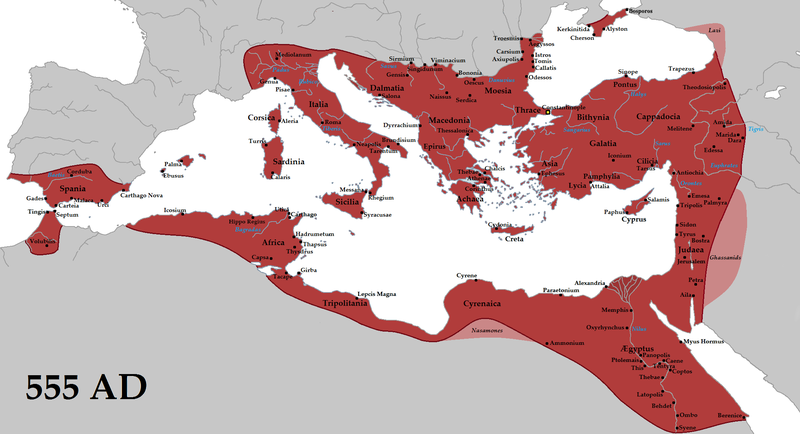
The map above shows the peak of the Byzantine Empire in 555 A.D.
The Church of the East (and the Byzantine Culture)
The Church of East has been very underrated in Christian history. Many people don't know its evolution and spread. The Church of the East was from Syria to as far as India and parts of China from 100 A.D. to 606 A.D. Many branches of the Church of the East were East Syriac Church, the Persian Church, the Assyrian Church, the Babylonian Church or the Nestorian Church. Many churches of the East accepted Chalcedonian Christology (believed by the majority of Christianity) and some didn't. Chalcedonian Christianity believes in the Christian view that there is the union of two natures (divine and human) in one hypostasis of Jesus Christ, who is a single person (prosopon). It accepts Nicene Christianity. In other words, the Council of Chalcedon declared that Jesus Christ is one person with two natures, a human nature and a divine nature. It declared that Jesus Christ's 2 natures are complete, and that each nature retains its own properties. The Church of the East started in Mesopotamia during the time of the Parthian Empire (which started in Iran). The Church of the East spread into China, Central Asia, and other Turkic territories. Many Churches of the East members aren't Nestorians. Many of them use the Peshitta translation of the Old Testament and New Testament. Christianity was in China by 635 A.D.
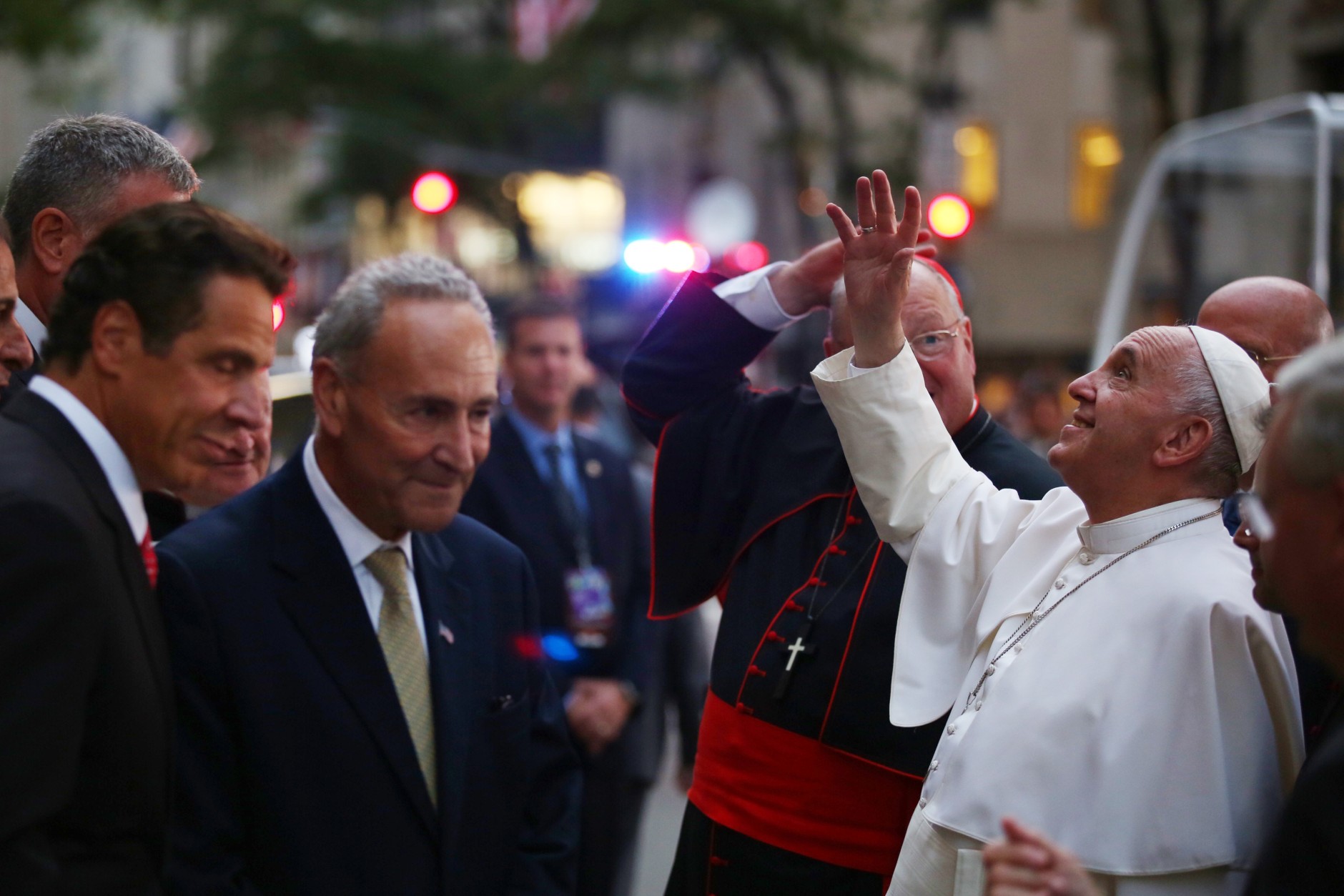
Heresies Develop
From the 300's to 1400 A.D., heresies were promoted in Europe. Later, the Roman Catholic Church would embrace these heresies as part of its fundamental doctrines. One of the early heresies of the apostate church (not the true church) is the embrace of prayers for the dead and the sign of the Cross. Wax candles were shown to the church by 320 A.D., the veneration of angels and dead saints existed by 375 A.D., the veneration of Mary as the Mother of God originated in the Council of Ephesus in 431 A.D, there were extreme Unction by 526. The doctrine of purgatory was formed by Gregory the Great in 593 A.D. The Latin language as the language of prayer and worship in Western churches, was imposed by Pope Gregory I. The title of Pope or universal bishop was first given to the bishop of Rome by the emperor Phocas in 610 A.D. Boniface III accepted the title although the Bible is clear that the bishop is to be married and only Jesus Christ is the head of the church. Kissing the pope's feet existed in 709 A.D. Holy water was created in 850 A.D., Fasting on Fridays and during Lent was created by 998 A.D., the mandatory of the priesthood was made by Pope Hilderbrand, Boniface VIII (as the apostles, bishops, etc. can be married with children as found in 1st Timothy 3:2,5 and 12 and Matthew 8:14-15). The Rosary was created by Peter the Hermit in 1090. The Inquisition was made in 1184 when Jesus never taught the use of force to spread his faith. Indulgences existed in 1190, and the dogma of transubstantiation was created by Pope Innocent III in 1215. Later, the adoration of the Host, confession of sins to a priest, and Scapular are more heresies that existed before the Reformation by the Roman Catholic Church.

Phocas and Bishop Boniface III
The Roman Catholic Church existed by gradual development. By 595 A.D., John IV Faster started using the title of universal bishop that Gregory I even denied that for himself as Gregory I was the Bishop of Rome. Gregory I said that the title of "universal bishop" was a sign that the antichrist is near and called it a proud and profane title. He compared John IV to the devil. In 2 Thess. 2:3-4, there is a prophecy about the antichrist falsely claiming to be God being the man of lawlessness and the son of destruction. By 595, John IV Faster (the Patriarch of Constantinople) died on September 2, 595. The Roman Emperor Maurice was murdered in a coup by Phocas, who then became Emperor in 602 A.D. There was a great power structure and rivalry between Old Rome (found in Italy) and New Rome (found in Constantinople). Gregory I promoted cardinal bishops. By 604 A.D., Gregory I, the bishop of Rome died and is replaced by Sabinian who reign for 2 years. In 606 A.D., Sabinian died, and Boniface III was the bishop of Rome. Boniface III changed everything. Phocas wrote to the new bishop Boniface that Boniface III is the new Head of all the churches which is a lie and heresy. He called him Universal Bishop. Boniface III accepts these titles, and Catholicism in the modern sense was born. The Eastern Orthodox Churches didn't accept Rome's claims and split from Rome permanently by 1054 A.D. in the Great Schism. Boniface III died on February 19, 607 A.D.

Conclusion
During the Church History era of Pergamos, the church spread globally from Ireland to China. There were many martyrs during that period that defended the faith. Many believers had a great foundation to adhere to core doctrines of Christianity like the Deity of Christ, the resurrection, the Virgin Birth, and the Holy Trinity. Heretics and other blasphemers were abundant, but many councils stood up to maintain the truth that the bedrock of Christian tenets must be respected. The Council of Nicea was right to maintain the Deity of Christ and the resurrection of the Lord Jesus Christ against the heresy of Arianism. Yet, Constantine made the error to merge church and state. Church and state shouldn't be mixed as God gives human beings free will to accept or not accept the Gospel voluntarily. The Gospel is not meant to be used against a person's volition. It ought to be voluntarily expressed to all Creation. Also, the church and state merging caused more heresies to rise and a centralization of some church so much that many bishops claim to be the the universal bishop which is unscriptural and ahistorical. The church originally was meant to be independent houses of worship filled with preachers, worshipers, and other clergy. As time went on false doctrines like Mary being the Mother of God, Rosary, prayers sent to Mary, purgatory, the veneration of saints and angels, and other false teachings rose up. Then, the Roman Empire declined and was gone on Western Europe forever by 476 A.D. Germanic tribes conquered many areas of Europe blatantly starting the Middle Ages. Boniface III claimed to be the Universal Bishop starting the modern Day Roman Catholic Church as we know it by 606 A.D. This era saw more people realizing that truth that if a person deny the power of the Scriptures, deny that Jesus Christ is God incarnate who saved the sins of the whole world by what he did on the Cross, deny the virgin birth of Jesus Christ, and deny the physical resurrection of Jesus Christ, that person is not a Christian (just a believer in God as a theist). After this era was the era of Thyatira from 606 A.D. to 1648 A.D. (from the time of Boniface III calling himself the Universal Bishop to the signing of the Treaty of Westphalia that recognized Protestantism in Europe). This era saw the peak of control of the Roman Catholic Church in Europe and the start of its decline with the historic Reformation and other events that impacted Christianity forever and ever.
By Timothy










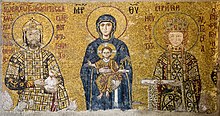
_Fol._27r%2C_Decorated_Initials.tif/lossy-page1-220px-Book_of_Hours_(Use_of_Metz)_Fol._27r%2C_Decorated_Initials.tif.jpg)




